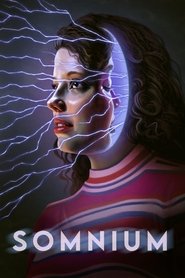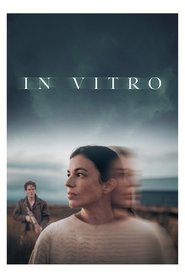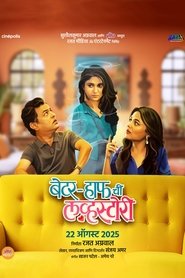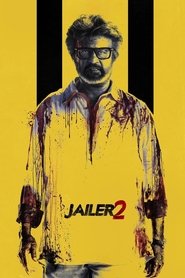
Video Sources 252 Views Report Error
Synopsis
Synopsis
Curse Breakers is an incredibly short film, produced by Cache Petters-Matthews (2023), which runs around 14 minutes. The plot centers around Mary, a Black mother, who is shopping for groceries with her two children, and she unexpectedly confronts the man who previously abused her as a young girl. This encounter triggers deep emotional and psychological reverberations–forcing Mary to confront not just that moment in her past, but the ripple effects across generations of her family. As Mary confronts anxiety, guilt, trauma, and the needs of her kids, this film aims to shed light on the cycle of pain and resilience, as well as the possibility of overcoming.
The story aims to depict the broader experience of trauma experienced by generations in Black communities, focusing on how silence, abuse, and power dynamics may be affecting many generations. Its name, “Curse Breakers,” implies that Mary and possibly other women of her family are (or will become) breakers of these unnoticed curses of shame, trauma, and inheritance.
Quick Movie Info
Here’s a well-organized summary of the main points:
| Attribute | Information |
|---|---|
| Title | Curse Breakers |
| Format | Film short (narrative) |
| Time to run | 14 minutes |
| Year | 2023 |
| Writer and Director | Cache Petters-Matthews |
| Country | United States |
| Language | English (presumed) |
| Cinematographer | Kemi Mayomi |
| Editor | Rou Wang |
| Music | Ashley K. Randle |
| Producer(s) | Cache Petters-Matthews and Deisy Gomez |
| Production Designer | Blake Bonaparte |
| Festivals / Screenings | The film was screened during “Short slot 1” at BIFF. |
| Rating Classification | The R (for more mature topics) |
Plot Summary
Below is a longer overview (with mild spoilers) of Curse Breakers:
Mary Mary, woman of color, Black woman, and mother, is navigating a typical day. She’s shopping with her children, which is one of the routine duties of parenting. While she is navigating the routine of everyday life, she’s being weighed down by the unspoken burden of her experiences in the past.
In the supermarket, Mary unexpectedly spots an image from her childhood trauma – a known victim. The event triggers a flurry of emotions, including fear, shock, anger, and a memory of trauma. The film doesn’t rely on long flashbacks or exposition. Instead, it utilizes a short, powerful scene to break Mary’s current situation, requiring her to confront what she’s tried to forget about.
As the story unfolds, we see how Mary’s experience is interwoven into the family’s tradition. The “curse” that is being discussed cannot be supernatural. It is rather the generations-long effects of silence, adversity, and traumas that are not healed, the burden that is passed on to sisters, mothers, and daughters. Mary’s story becomes an illustration of what it takes to break these cycles.
Mary also plays two roles: guardian of her children and a woman whose personal life is at risk. The film focuses on internal conflicts between trying to protect her children, not cause distress, while remaining at a distance from her abuser.
The final scene is not about confrontation but more about determination. Mary has to decide whether she wants to let her past define her or assert her power as a “breaker”-someone who is determined not to allow the cycle to continue. The film’s conclusion is ambiguous, but it is an arousing emotional experience. Mary’s appearance, posture, and actions (small but significant) reveal the seeds of resiliency, resistance, and change.
Because of the compact format, there are many details left unclear or in elliptical form. The film is successful because of what it reveals and not only by the things it clearly illustrates.
Themes and Analyses
Although brief, Curse Breakers is rich thematically. Below are the main themes, tensions, motifs, and interpretational angles.
Generational Trauma & Inherited Wounds
One of the major themes is that trauma cannot be restricted to a single event but is echoed across generations. The film suggests that Mary’s story is indivisible from the experiences of her grandmother, mother, and her ancestral lineage. The cycle of silence, abuse, shame, and repression flows through the generations, often without notice. Mary becoming”breaking “breaker” is an analogy for breaking down the burdens of ancestors.
Identity, Motherhood, and Protection
Mary’s role as a mother is crucial. The birth of children can intensify the need to heal and defend. Motherhood is a stake-taking role, not only for her but for the future of her children. A painful memory can threaten her self-esteem as well as her capacity to take care of her children. The film puts her in the middle of vulnerability and power.
Memories, Ghosts & Silence
The presence of the victim acts as a “ghost”-not actually supernatural, but instead as an unsettling memory that manifests in the current. The silence surrounding the abuser is a powerful factor, and the film challenges viewers to experience the weight of what is not said, of what needs to be identified. Memory can be unstable and uncertain, traumatizing, yet requires acknowledgment.
Power, Agency & Reckoning
Mary’s fight is not about revenge (in an actual sense), it’s about taking back power. It suggests breaking a curse isn’t always like a dramatic act, but it’s a matter of calling out, directing one’s story, or showing up, and then surviving. The film focuses on the power of agency over victimhood.
Representation and Cultural Resonance
Since Mary is a Black woman, her story is also a part of discussions on the racialized trauma of racism and social invisibility, as well as the additional weight of having to be marginalized. It’s not merely a “personal story” but one that has an underlying cultural context, demonstrating how communities of color typically carry multiple traumas (abuse or injustice, and the systemic effects). The film addresses the question: Who is seen? Who gets a chance to be believed? Who has broken the rules, and who is accountable?
Ambiguity and Poetic Storytelling
With its limited duration, Curse Breakers isn’t aiming for a tidy conclusion. The uncertainty is an element of its strength as the viewer is left to experience Mary’s emotional world. The film entrusts the audience members to bridge the gaps as they feel uncomfortable and experience tension that is not resolved.
Criticism and Controversy
Due to the sensitivity and nature of its subject matter, The Curse Breakers could draw criticism. Below are areas that could be the subject of controversy, criticism, and commentary that are well-known.
Triggering Content, Trauma Depiction & Responsibility
The depiction of violence, whether implicit or offscreen, requires care in handling. Some viewers may feel the film is emotionally charged or triggering. Because the film is short, it isn’t able to offer context or a therapeutic distance. Some may be critical for not providing closure, as well as “healing” closure that may not be enough for those suffering.
Voices and representation
Although it is personal and generally successful, any work that deals with trauma, particularly race-based trauma, is subject to an examination of whether the voices portrayed are authentic. Do they lean towards stereotypes or motifs? It is possible to ask if the film focuses on pain more than joy, or if it is at risk of perpetuating narratives about Black suffering instead of fullness.
Ambiguity and lack of closure
Certain critics might see this as a weak point, wanting more narrative explanation, confrontation, or even catharsis. In short films, the open-ended nature can be interpreted as poetic, but is viewed as undeveloped by others.
Audience Reach & Access
Short films are often unable to reach a broad audience. A film that has a powerful social message but restricted distribution may not have the effect they would like to achieve. Certain viewers may be critical of festivals and the structures of industry in limiting access to these stories, especially those of the marginalized artists.
Tone & Pacing Constraints
When condensing this kind of material in a short time span of 14 minutes, some changes or emotional beats might be overscheduled. Certain viewers may find the pacing uneven or want more development of relationships, backstory, or emotional narratives.
However, as far as I know, Curse Breakers hasn’t seen any public debate or backlash that has been received; however, its reception at festivals has been favorable, describing it as a great debut and a strong call-to-action for the director.
Cinematography and Style
Despite its brief form, Curse Breakers employs a visual and sonic approach carefully to enhance the emotional resonance.
- Cinematography and Framing The film typically utilizes close-ups and tight framing, as well as shallow depth of field, to show Mary’s emotional state. Her posture, face, and facial expressions are the focal point of the film. The off-center compositions and negative space could emphasize fear, tension, and confusion when the victim shows up.
- Lighting and Color Palette The lighting is rooted in reality, with a blend of interior and natural lighting. A slight desaturation or muted color could evoke emotions. Contrasts between bright, common environments and darker or unclear zones can amplify the rift when trauma enters.
- Editing and Pacing Cutting is likely to be controlled, allowing for moments to last. The pace should be balanced between the normal flow (shopping and motherhood) and abrupt disruption. The use of jump cuts or crosscuts could be used to break time and memory or reduce emotional beats.
- Sound Design and Score: The sounds of the night (grocery store hum and footsteps, chatter from children) provide a sense of normality. If the perpetrator is in the scene, sounds likely change–silences and subtle distortion, music drones, or stings to increase the intensity. The score, composed by Ashley K. Randle, is likely to emphasize interiority instead of blazing action.
- Symbolic visuals. Although subtle, the film may employ shadows, reflections, mirrors, and tight spatial elements (shelves and aisles) to suggest entrapment, double-shape, or psychological layering. The concept of “curses” can be brought to mind visually, but not through fantasy effects, but through metaphor, suggestion, or a spatial composition.
- Temporal and Spatial Compression, due to its short duration, it is necessary for the film to convey an extended life story through costumes, props, staging, or visual shorthand. Genre expectations (trauma or memories) influence how temporal and visual jumps are dealt with.
In the end, the style strives to create a sense of intimacy, making viewers feel Mary’s shock, tension, and inner conflict, instead of external spectacle.
Cultural Impact
Although it’s a short film with a limited runtime, Breakers is a film that has a wide audience. Breakers have an impact on the culture in a variety of ways:
Emerging Voice, Festival Presence, and Visibility
In its role as a festival, Short Curse Breakers helps increase the exposure of emerging Black women and nonbinary artists. It functions as a “calling card” for Cache Petters-Matthews. It helps to open doors, highlight her creative voice, and spark conversations about filmmaking representation.
The film’s presentation during The Beloit International Film Festival (BIFF) places it within the larger festival circuit, allowing it to expose its themes to those who are interested in issues of social justice and trauma, as well as representation.
Discussions on Generational Trauma and Abuse
The film is part of the growing conversation in the field of trauma that is intergenerational, particularly in communities that have been historically marginalized. It highlights patterns of violence, silence, and the weight of memories. The public, the critics, and activists can refer to the Curse Breakers in discussions about the way in which trauma is passed down and how those who have survived navigate their lives, and how art can provide spaces for acknowledgement and healing.
Representation of Black Women’s Stories
Narratives that focus on Black women who are confronting and overcoming trauma are not often seen in films, particularly in short films that have intimate angles. Curse Breakers can help broaden the range of stories that are told beyond spectacle, beyond the stage of crisis, towards inner struggles, memory, and resistance. It can inspire other authors to create similarly intimate but universal stories.
Participation, Education, and Utilization in Dialog
Because of its small size and powerful story, Curse Breakers can be used in advocacy workshops, workshops, or in educational environments (e.g., discussions about healing, abuse, and the trauma-informed storytelling). Short films are often used as a catalyst for discussion since they can be easily screened and followed by discussions.
Inspiring Future Works & Voices
In terms of its high-end, visually ambitious short, Curse Breakers may help others pursue short films with social themes, specifically by filmmakers from communities that are underrepresented. It demonstrates that the short form does not mean sacrificing emotion or meaning.
Where to Go and “Guts?” (Essence / Strength)
Where to watch
Since Curse Breakers is an extremely short film, its distribution is restricted than a feature film. Based on the available information:
- It has been shown at festivals like the Beloit International Film Festival (BIFF).
- It could be featured on short film circuits or online festival platforms, or even curated short film exhibitions.
- It could be available via the director’s or producer’s sites, Vimeo, or short streaming platforms (although I couldn’t find an open streaming URL through my searches).
- Sometimes, short films are posted occasionally on YouTube; however, I could not find a verified complete version in my search.
If you’d like, I could locate a stream that is available to the public (if there is one in your area) and distribute it with you.
“Guts?” What Gives It Strength?
If, by “Guts?” you meant its fundamental power or the emotional backbone, here’s what I think provides the Curse Breakers with its strength:
- Emotional Compression, in just 14 minutes of time, the program addresses the trauma of motherhood, generational trauma and abuse, as well as memory and agency. The kind of condensation that you can get is done with care and requires a lot of skill and determination.
- Intimacy and Focus The film focuses on Mary’s gaze, internal state, and subtle changes. It encourages empathy instead of visual spectacle, and trusts the viewer to be able to feel and think.
- Resonant Symbols“The “curse” doesn’t have a supernatural element, but can be a powerful metaphor to describe the inherited injuries. The idea”breaking the curse “is culturally and emotionally resonant–invoking hope, resistance, and responsibility.
- Representation & Voice because Mary represents a Black mother, and the film offers an opportunity for a perspective that is usually overlooked when it comes to short-film drama. The film’s existence broadens the types of stories that can be seen.
- Artistic Confidence Although he is young for a filmmaker (for whom this is an invitation card), Cache Petters-Matthews brings personal urgency. His aesthetic decisions, the pacing, and restrained narrative display confidence instead of compromise.
Frequently Asked Questions (FAQ)
Q:Is the Curse Breakers (2023) identical to the Curse Breaker or any other Chinese film?
A: There is no confirmed linkage. Curse Breakers (2023) is a U.S. short by Cache Petters-Matthews. I discovered references to “The Curse Breaker,” a Chinese short drama, via shortdrama.net. However, I could not find credible information or film databases that confirmed the authenticity of the film. If the film you are planning to make is one of those, I could investigate and write a new script in accordance with the title.
Q: What’s the “curse” that is being referred to?
An example: “The ‘curse’ is a metaphor. It is a reference to the generational burden of abuse, trauma, silence, memory, and trauma–cycles that haunt communities and families. Mary’s challenge is about ending this curse, not by magic but by taking back voice, memory, and authority.
Q is the Curse Breakers basing itself on an actual tale?
A: There’s no evidence to suggest that the film is autobiographical or based on a single story; however, director Cache Petters-Matthews has stated that the film was inspired by her mother’s story and aims to bring about changes within Black communities across generations.
Q What is the reason it’s not longer than 14 minutes?
A: This is a shorter film. The short format allows for an intense emotional impact, a simpler festival submission, less budget, and also the ability to concentrate on a single particular moment or turning point instead of an entire length.
Conclusion
Although it is short, Curse Breakers is an enthralling example of the way short films can carry an impact, inspire reflection, and evoke the urgency of our lives and culture. Within its 14 minutes, it dives deep into the psyche of memory, trauma, motherhood, as well as the potential of overcoming inherited curses. It doesn’t rely on spectacle or sexiness; rather, it relies on subtle changes, interiority, in addition to symbolic resonance.
Its strength lies in the control and compassion. Mary’s battle is not an epic blockbuster battle; it is an internal reflection, an expression of internal conflict. Through precise cinematography, careful editing, and a minimal amount of introduction, the film invites viewers to be a part of her fragmented past and experience the tension of memory and the daily grind.
From a cultural standpoint, Curse Breakers can be seen as a contribution to discussions about trauma, especially within Black communities where silence is often a source of the pain. It shows that stories of strength need not require epic battles. Sometimes, they are whispered inward slowly and obstinately.
The Curse Breaker A Captivating Chinese Short Film with Universal Resonance
 Original title The Sexy Sixth Sense
IMDb Rating 3.3 805 votes
TMDb Rating 5 8 votes
Director
Director
Cast
Frances
Bibo the Clown
Stripper #1
Stripper #2
Stripper #3
Stripper #4
Dr. Willies
Father O'Malley


















